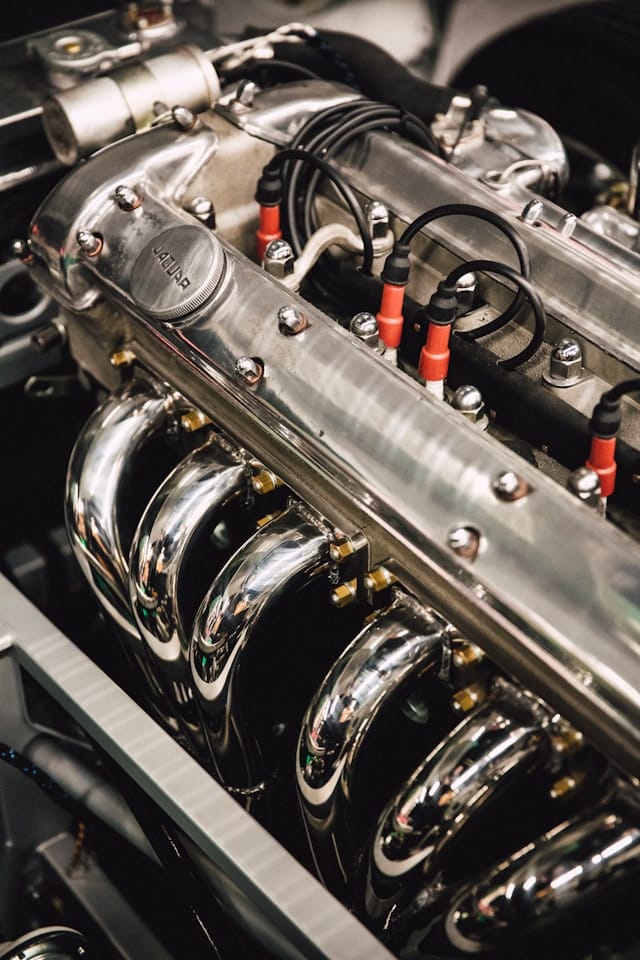What Are the Best Practices for Installing an Aftermarket Turbocharger Kit?

As automotive enthusiasts, you know that the quest for increased performance and power never ends. You might be considering ways to boost the performance of your vehicle. One way to achieve this is by installing an aftermarket turbocharger kit. Turbochargers are a type of forced induction system. They compress the air flowing into the engine, allowing more air (and therefore more fuel) to be added. The result is a significant increase in power output.
When properly installed, a turbocharger can transform your vehicle’s engine performance. However, it’s not a simple plug-and-play operation. It requires careful planning and precise installation. Let’s delve deeper into the best practices for installing an aftermarket turbocharger kit.
A lire en complément : Can Upgrading to Performance Valve Springs Increase Engine RPM and Power?
Understand the Functioning of Your Vehicle’s Engine
Before embarking on installing a turbocharger, you must first understand your car’s engine system. A turbocharger uses the exhaust flow from the engine to spin a turbine, which in turn spins an air compressor. The compressed air boosts the engine’s efficiency and power output.
Understanding your engine’s specifications and limitations is crucial. You need to consider the engine’s displacement, configuration, and redline. Also, consider your vehicle’s cooling system, oil supply, and manifold design. The aim is to have a turbocharger that fits well with your engine’s character and doesn’t overpower it.
A lire également : What’s the Best Way to Protect Your Car’s Engine with a High-Quality Oil Filter?
Once you’ve understood your engine, choose a turbo size that matches your engine criteria. Larger turbos provide more boost but require higher engine speeds to function effectively. On the other hand, smaller turbos spool up quicker at lower engine speeds but might not offer the high-end power you desire.
Selection of the Right Turbocharger and Associated Components
When choosing a turbocharger for your car, it’s essential to remember that bigger isn’t always better. An oversized turbocharger will take longer to ‘spool up’ and may lead to a lag in power delivery. Conversely, a too-small turbocharger may deliver an increase in power at low engine speeds, but could possibly choke the engine at higher speeds.
Choosing the appropriate turbocharger also extends to its associated components. These include the intercooler, which cools the air compressed by the turbo, the manifold, which routes exhaust gases into the turbo, and the oil system, crucial for cooling and lubricating the turbocharger.
Ensure the intercooler is large enough to handle the air flow and pressure from the turbocharger. The exhaust manifold should be strong enough to withstand high exhaust temperatures and pressures. The oil system should provide adequate lubrication to avoid turbocharger failure.
Proper Installation of the Turbocharger Kit
Proper installation of the turbocharger kit is a decisive factor in ensuring optimal performance and longevity. Begin by thoroughly cleaning the engine and ensuring the turbo mounting flange on the exhaust manifold is smooth and flat.
The turbocharger should be mounted with its oil drain point at the lowest point. This is critical as the lubricating oil needs to drain freely from the turbo back into the engine. Restricted oil flow can cause bearing damage and turbocharger failure.
Another key aspect is the installation of the intercooler. It should be mounted in an area with plenty of cool, incoming air and should have minimal piping length to reduce turbo lag.
Tuning Your Car for the Turbo
After installing the turbocharger, your car will need to be tuned to make full use of the increased air and fuel flow. This tuning process is critical to prevent engine damage and ensure optimal performance.
During tuning, adjustments will be made to the vehicle’s air/fuel ratio, ignition timing, and boost pressure. It’s recommended to hire a professional tuner to perform this task, as they will have the knowledge and equipment to tune your car safely and effectively.
Regular Maintenance and Communication
Finally, regularly checking the turbocharger and related systems is crucial. Regular oil changes, for instance, are essential as turbos can contaminate engine oil quicker than naturally aspirated engines. Also, regularly inspect the intake and exhaust systems for leaks and ensure all fasteners are properly tightened.
The other best practice is to establish an open line of communications with your turbo seller or installer. They can provide valuable advice, troubleshoot issues, and suggest maintenance routines.
Installing a turbocharger is indeed a significant undertaking, but by following these best practices, you can enhance your vehicle’s performance safely and reliably. Just remember, the power lies not just in the turbocharger but also in the knowledge you obtain, the careful decisions you make, and the meticulous installation you perform.
Handling the Exhaust Manifold and Oil Supply System
When it comes to installing a turbo, careful consideration must be given to the connections between the turbocharger and the engine. Two critical connections are the exhaust manifold and the oil supply system.
The exhaust manifold serves as a conduit, guiding the exhaust gas from the engine to the turbine wheel of the turbo. Mistakes in connecting the exhaust manifold can cause a bottleneck in the exhaust flow, limiting the turbo’s performance. Therefore, it’s vital to ensure a perfect fit between the exhaust manifold and the turbine housing.
A crucial factor to remember is the heat generated by the turbocharger due to the high-speed rotation of the turbine wheel and compressor wheel. This makes the turbocharger susceptible to overheating, which would lead to its damage. Therefore, a reliable oil supply system is critical to manage the heat. The oil supply system lubricates the moving parts and helps dissipate the heat generated.
When installing, make sure the oil feed line is free from kinks and obstructions. The oil feed line should ideally be positioned above the oil level in the oil pan to allow gravity to aid in oil flow. This ensures a steady oil pressure and prevents oil starvation, which could lead to premature turbocharger failure.
Enduring the Rigors of a Diesel Engine
Installing a turbocharger kit on a diesel engine also requires special attention. Diesel engines, due to their high compression ratio and combustion temperatures, can place additional stress on the turbocharger.
The combustion process in a diesel engine can produce a large volume of exhaust gas. This necessitates a larger turbine housing to accommodate the increased exhaust gas flow. Moreover, the abundance of particulates in diesel exhaust can clog the turbocharger over time, making regular cleaning a necessity.
Moreover, diesel engines often have longer oil change intervals than gasoline engines. This means the oil in a diesel-powered turbocharged engine may become contaminated more quickly, emphasizing the need for regular oil changes.
Lastly, due to the increased vibrations inherent in a diesel engine, make sure to secure the turbocharger and its associated components to prevent any potential damage.
Conclusion
In the end, the successful turbocharger installation lies in understanding your engine’s characteristics, making the right component choices, and performing a meticulous installation process. Paying close attention to the exhaust manifold and oil supply system ensures the turbocharger is integrated seamlessly with the engine. While diesel engines might add an extra layer of complexity, understanding the unique challenges they present will lead to a more reliable turbo installation.
At the heart of it all is Garrett Motion, a leader in turbocharging technologies, guiding you through every step of the process. From marketing communications providing detailed installation guides to the readily available customer support, Garrett Motion is there to assist you in your pursuit of power.
Remember, the journey of installing a turbocharger is not just about enhancing your vehicle’s performance, but also about the knowledge and experience you gain along the way. A well-installed turbocharger kit is a testament to an enthusiast’s dedication to their vehicle, reflecting their quest for power and performance, and ultimately, their love for the art of motoring.
